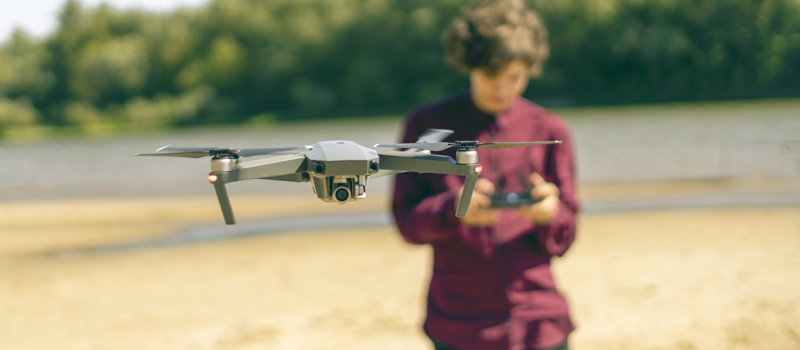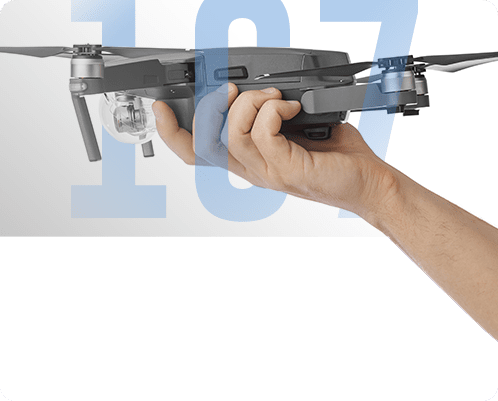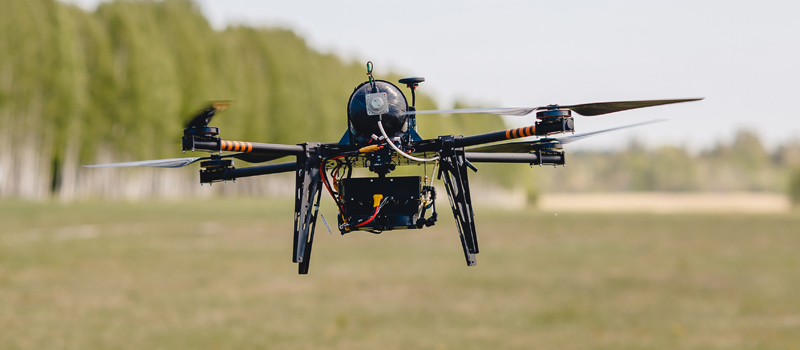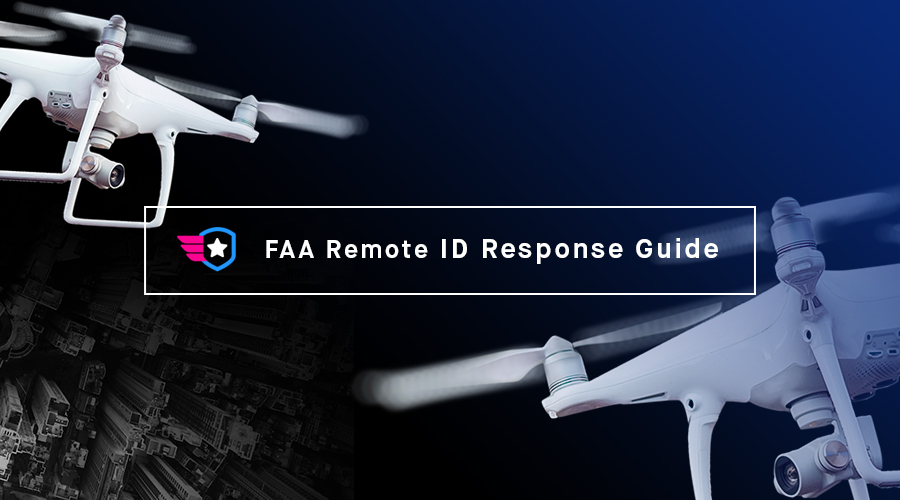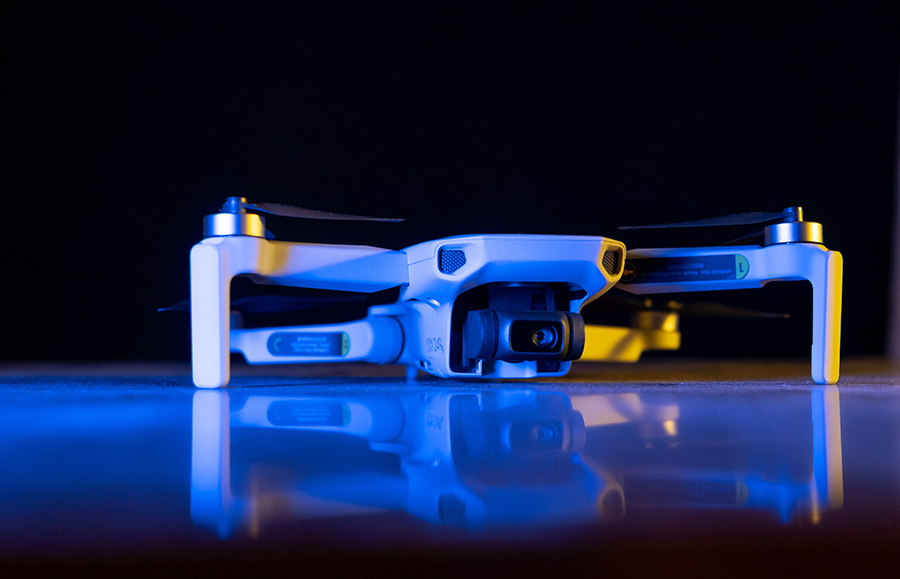If you’ve been a member of the drone community for some time, then you’re probably no stranger to Part 107. However, there still are certain facets of Part 107 that are poorly understood, even by experienced drone pilots. As for beginners, learning about Part 107 is critical whether you plan to fly drones recreationally or commercially.
In this guide, we’ll be tackling the basics of Part 107, how a drone pilot can get certified, and the basic flight rules and restrictions. We’ll also be placing special focus on Part 107 topics we often get asked about and are apparently poorly understood, even within the community of experienced drone pilots.
The basics: What is Part 107?
More formally known as Part 107 of Chapter 14 of the Code of Federal Regulations or the “Small UAS Rule”, the Part 107 rules provide the legal framework for commercial drone flight. Part 107 was formulated and is implemented by the joint effort of the Department of Transportation (DOT) and the Federal Aviation Authority (FAA).
Part 107 supersedes the previously implemented requirement for commercial drone pilots to secure a Section 333 exemption prior to commercial operations. Compared to Section 333, getting a Part 107 license is a lot faster and has a shorter list of requirements. In fact, this is one of the primary objectives of the FAA with the Part 107 rules – to encourage the growth of the commercial drone industry.
The Part 107 rules were first implemented back in June 2016. Since then, the FAA has been reviewing the rules to look for areas of improvement. Many of these changes have been proposed but not yet implemented. Still, this is indicative of the dynamic nature of drone legislation and the trend which will likely continue for the next several years.
Recreation vs. commercial drone flight
Distinguishing between recreational and commercial drone flight has been one of the major points of confusion for the drone community. Classifying the category in which your drone operation falls under will determine which rules are applicable to you.
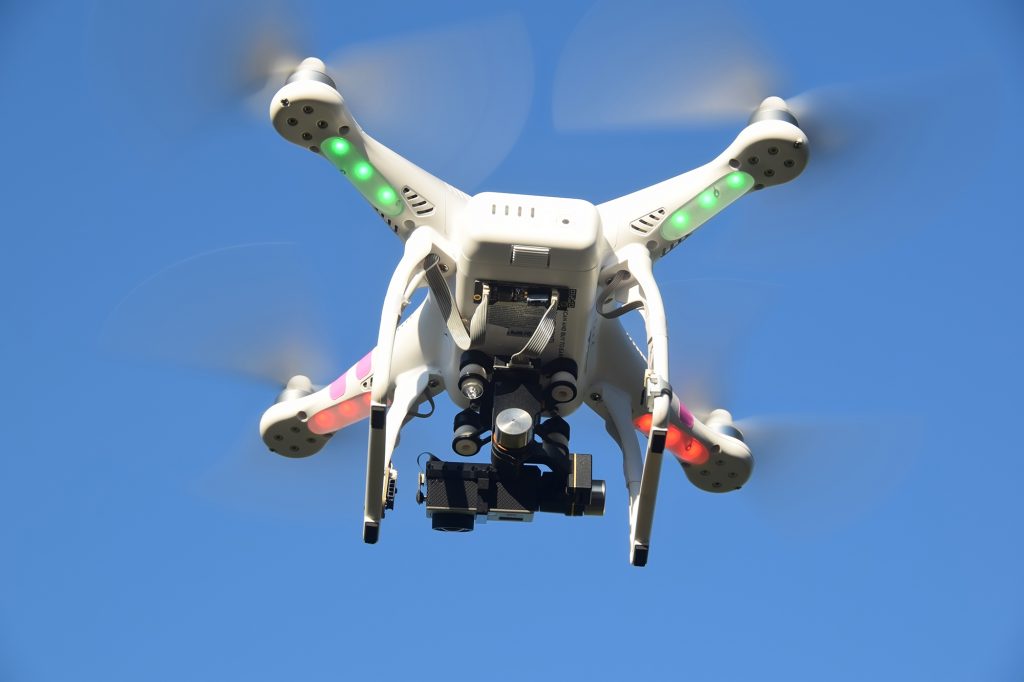
For background, the rules that apply to recreational drone pilots is Section 44809 of Chapter 447, Title 49 of the United States Code. It is more formally known as the “Exception for limited recreational operations of unmanned aircraft”. This is a relatively recently implemented law (May 2019) which puts a finality to the long-debated matter of which rules govern the recreational use of drones in US national airspace.
As the name implies, Section 44809 is an EXCEPTION. What this means is that drone pilots need to assume that they fall within the jurisdiction of Part 107 unless they satisfy all the provisions of Section 44809. These provisions are as follows:
- The aircraft is flown strictly for recreational purposes (determined by the intent of the flight)
- The aircraft is operated in accordance with or within the programming of a community-based organization’s set of safety guidelines that are developed in coordination with the Federal Aviation Administration.
- The aircraft is flown within the visual line of sight of the person operating the aircraft or a visual observer co-located and in direct communication with the operator.
- The aircraft is operated in a manner that does not interfere with and gives way to any manned aircraft
- In Class B, Class C, or Class D airspace or within the lateral boundaries of the surface area of Class E airspace designated for an airport, the operator obtains prior authorization from the Administrator or designee before operating and complies with all airspace restrictions and prohibitions
- In Class G airspace, the aircraft is flown from the surface to not more than 400 feet above ground level and complies with all airspace restrictions and prohibition.
- The operator has passed an aeronautical knowledge and safety test described in subsection (g) and maintains proof of test passage to be made available to the Administrator or law enforcement upon request
- The aircraft is registered and marked in accordance with chapter 441 of this title and proof of registration is made available to the Administrator or a designee of the Administrator or law enforcement upon request
To emphasize, a drone pilot must comply with ALL eight provisions before they can claim to be flying under Section 44809 rules. The first bullet point is probably the most challenging one and is the most common point of confusion – the requirement to fly strictly for recreational purposes.
How is recreational flight defined? This is usually loosely described as “flying for fun”, but is more accurately defined as any drone operations not done for a commercial purpose. Commercial drone operations imply flying a drone with the ultimate objective of earning money from it, but these also include any operations in aid of a business.
Just to illustrate this concept, any drone operations for which you expect to get paid is clearly considered commercial use. This includes taking aerial photos for selling online or recording videos that you plan to upload on a monetized YouTube channel. Using drones to aid a business is also considered commercial, such as when doing aerial surveillance for the security of a farm or doing aerial mapping to prepare a site for infrastructure development.
Although the Section 44809 provisions mention a knowledge test for recreational drone pilots, this has not yet been implemented by the FAA. The process of preparing the test and how it will be implemented is still ongoing. We expect significant updates on this matter within a year or so.
Part 107 drone pilot certification
A major part of the Part 107 rules is the requirement for all drone pilots to get a remote pilot certificate before they can do commercial operations. More commonly known as the “drone license”, this certificate is legal proof that the drone pilot complies with the standard knowledge and safety standards of the FAA for commercial drone pilots. It also allows the FAA to maintain a database of all licensed drone pilots, with the relevant information made available to the public.
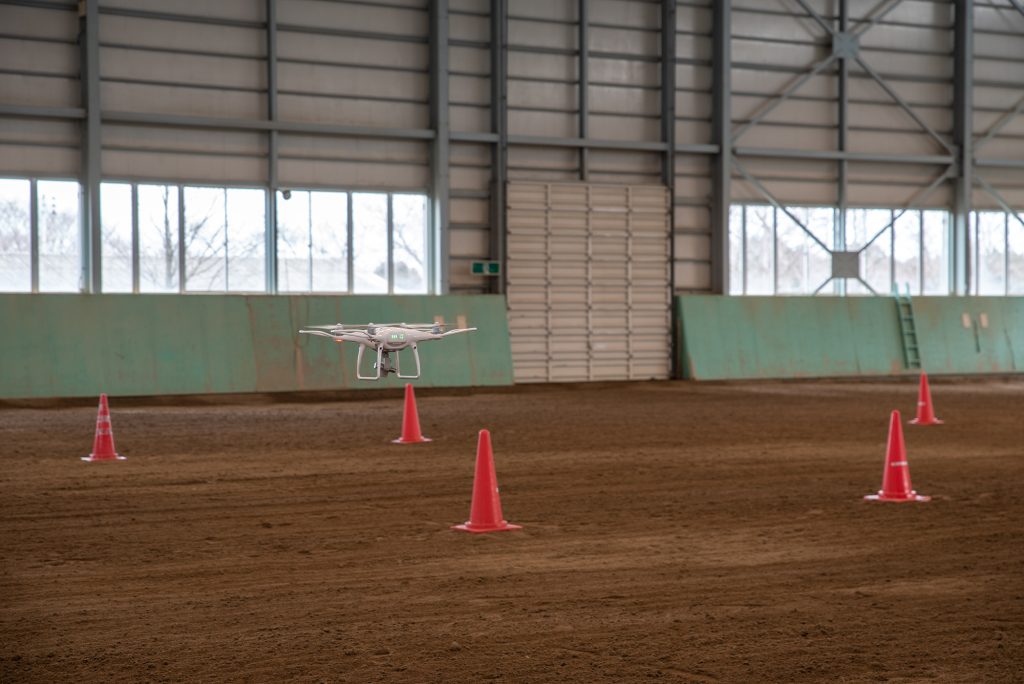
The main requirement to get the drone license is for drone pilots to pass a Part 107 knowledge test. All drone pilots who are at least 16 years of age, can read, write, speak, and understand English, and are physically and mentally fit to fly drones are eligible to sign up for the test. Applicants must also sign up for an FAA Tracking Number (FTN) before they can register for the knowledge test.
The Part 107 knowledge test consists of 60 multiple-choice items that span a wide range of topics related to aviation and aeronautics. An applicant must answer at least 70% of the items correctly, or 42 out of 60, to pass the test. The test is administered by PSI on behalf of the FAA, which means that applicants can take the knowledge test in any of the more than 700 FAA-accredited testing centers all over the US and in select territories. You will have to sign up for an appointment with PSI to take the test provided that you comply with all the requirements.
Preparing for the Part 107 knowledge test is probably the most work that a drone pilot needs to do to earn a drone license. For those who have no aviation experience, even basic things like reading sectional charts and interpreting standard radio language can be challenging. For this reason, we strongly recommend setting aside at least two weeks to seriously prepare for the knowledge test.
If you need professional help for preparation, the good news is that there a lot of paid online courses created solely for Part 107 preparation. Pilot Institute offers a Part 107 Made Easy course for your consideration. The fully online course provides more than 200 video lessons, unlimited practice exams, an 11-page illustrated cheat sheet, a flashcard app for your smartphone, and access to a community of students and experts. Just by paying the one-time sign-up fee, you gain lifetime access to the course material which is revised and updated periodically to reflect the current state of drone-related laws.
Regardless of how you prepare, you should show up on time to your appointment with a valid photo ID and ideally with a basic calculator. Leave your phone behind, as you will not be allowed to take it into the testing room. You will be given two hours to finish the knowledge test.
Within 48 to 72 hours, you will be informed if you passed the test or not. If you did, then congratulations! You will still need to go through a TSA background (which can take a few weeks) before you will be officially granted the drone license. As a Part 107 certified drone pilot, you are expected to carry your drone license with you whenever you operate commercially, among about a dozen other rules you need to follow.
Should you fail the knowledge test, the FAA will allow you to take it again after 14 days have passed. Take note that the 60 questions that show up on your knowledge test is a random selection from a much larger pool of questions. This means that you’re very unlikely to encounter the same set of questions, even if you take the test multiple times.
Drone flight rules and restrictions
The documentation for Part 107 of 14 CFR takes up a total of 624 pages. Knowing this, it’s easy to imagine just how comprehensive the Part 107 rules are. That said, we won’t attempt to summarize all of the Part 107 rules in this article. Instead, we’ll be focusing on the ones that are most pertinent to regular drone operations.
- Always keep your Part 107 certificate with you when flying commercially. Any representative from the FAA, TSA, or law enforcement has the authority to ask you to present your Part 107 certification.
- Always avoid and yield right of way to manned aircraft.
- All drones flown under Part 107 rules must be registered with the FAA regardless of weight. The drones must be registered individually and each one should be marked with a unique registration number following official FAA guidelines on marking.
- All drones used for commercial operations should weigh less than 55 pounds total, including any accessories, payload, or cargo.
- A drone pilot must make their drone available to the FAA for inspection or testing upon request.
- Keep your drone within visual line of sight. This must be done without the use of visual enhancing equipment. If this is not possible, have a visual observer to perform this function for you.
- Do not operate your drone over people who are non-participants in your operations.
- Do not operate your drone over a moving vehicle.
- Operate your drone only if there is minimum weather visibility of three miles from your location
- Do not fly your drone from a moving land or water vehicle unless you are flying over a sparsely populated area and it does not involve the transportation of property for compensation.
- The maximum allowable altitude for drone flight is 400 feet above the ground or higher only if the drone is within 400 feet of a tall structure.
- Do not operate your drone in a careless or reckless manner.
- The maximum allowable groundspeed for drone flight is 100 mph or 87 knots.
- Drone operations in Class B, C, D, and E airspace is allowed only if the appropriate ATC authorization has been granted. Operation in Class G airspace is allowed even without ATC permission.
- Drone operations are allowed only during daylight or in twilight (30 minutes before official sunrise or 30 minutes after official sunset) if the drone is equipped with anti-collision lighting.
- Any drone-related accident that causes serious injury, loss of consciousness, or property damage costing at least $5000 must be reported to the FAA within 10 days.
Flying in controlled airspace
The concept of controlled airspace is something that everyone in the field of aviation needs to know. This includes drone pilots, both recreational and commercial. By default, drone flight in Class B, C, D, and E airspace is prohibited unless the appropriate airspace authorization has been granted.
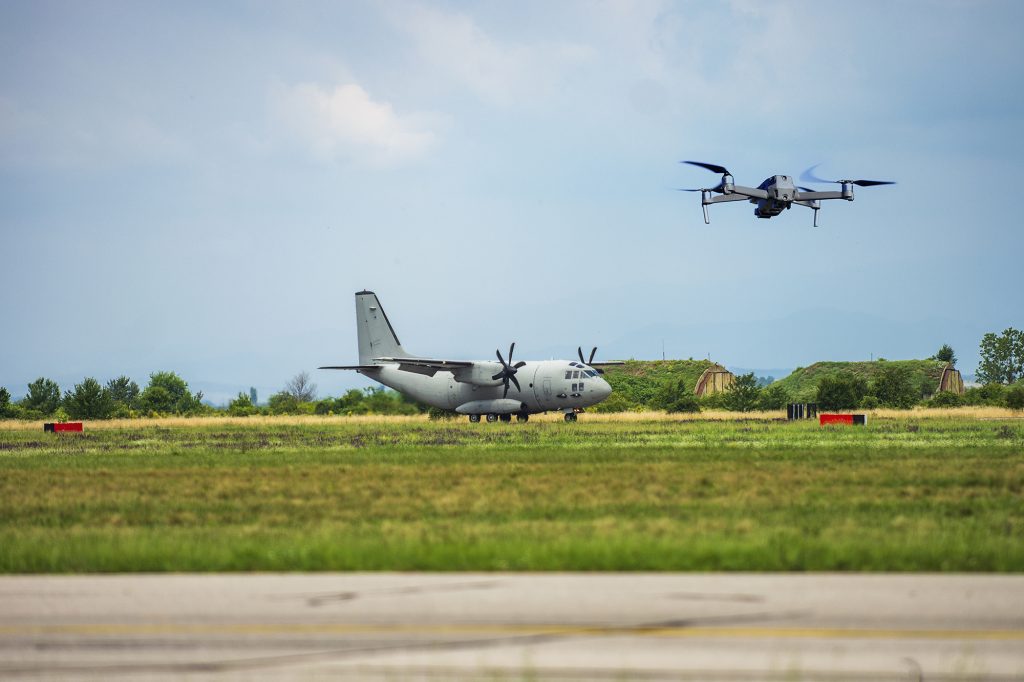
For Part 107 pilots, this used to involve requesting for a waiver directly from the FAA. This was a process that took several weeks before the authorization was granted. Given how extensive the coverage of controlled airspace was in the US, this proved to be far too slow for providers of commercial drone services.
In 2017, the FAA launched the Low Altitude Authorization and Notification Capability (LAANC) system. This was a feature that was accessible via most drone flight planning apps that allowed drone pilots to request airspace authorization via the app and receive a response in just a few seconds. By automating the process and centralizing where the requests were received, the FAA was able to provide a rapid and streamlined system for handling airspace authorization requests.
Although the LAANC system was initially only available for Part 107 drone pilots, it was expanded in 2019 to handle requests from recreational drone pilots.
Right now, the LAANC system is still not perfect in that not all flight planning apps support it and that it still does not cover 100% of the airports in the US. However, the FAA is constantly adding new airports to the coverage list, the latest effort of which added 100 new airports back in 2019.
What if you need to fly a drone in controlled airspace close to an airport that is not on the LAANC list? Unfortunately, this means having to file an airspace authorization waiver. If you’re offering a professional service under this flight, then it’s prudent to file for the waiver request a few months ahead of the planned operations.
Requesting for a Part 107 waiver
Recognizing the mandate to promote the growth of commercial drone services in the US, the FAA has a system that allows drone pilots to “color outside the lines” if necessary. This is the rationale behind the Part 107 waiver system that allows drone pilots to file waiver requests for selected provisions of the Part 107 rules.
There are limitations to which provisions commercial drone pilots are allowed to file waiver requests for. The approval of each request is entirely up to the discretion of the FAA. Only if a drone pilot exhibits a thorough understanding of the risks involved in the proposed activity and how to mitigate such risks will the FAA grant the request.
In most cases, the FAA will also require certain safety measures to be in place during the activity. For instance, most waivers granted for flight over people mention equipping their drones with a parachute system. Operations beyond daylight or twilight are typically allowed if the drone has appropriate anti-collision lighting that will aid the pilot in determining the drone’s location and attitude even in complete darkness.
The major downsides of applying for a Part 107 waiver are that they require a lot of documentation and they still take a long time to process. According to FAA’s official statement, they prescribe a 90-day lead time between the filing of a request and its approval.
Thankfully, the FAA seems cognizant of the needs of commercial drone pilots for operational flexibility. Back in January 2019, the FAA files a notice of proposed rulemaking (NPRM) seeking to allow drone flight over people or past daylight subject to certain conditions. Under the proposed terms, drone pilots will be allowed to fly under the said conditions without the need to file for waivers. This move will also greatly reduce the workload of the FAA considering that more than 95% of the waiver requests they receive are for drone flight at night.
As of December 2020, there has been no update yet on the status of the NPRM. Should it pass into law, it should help make it a lot easier for drone pilots to offer their services under conditions previously restricted by Part 107.
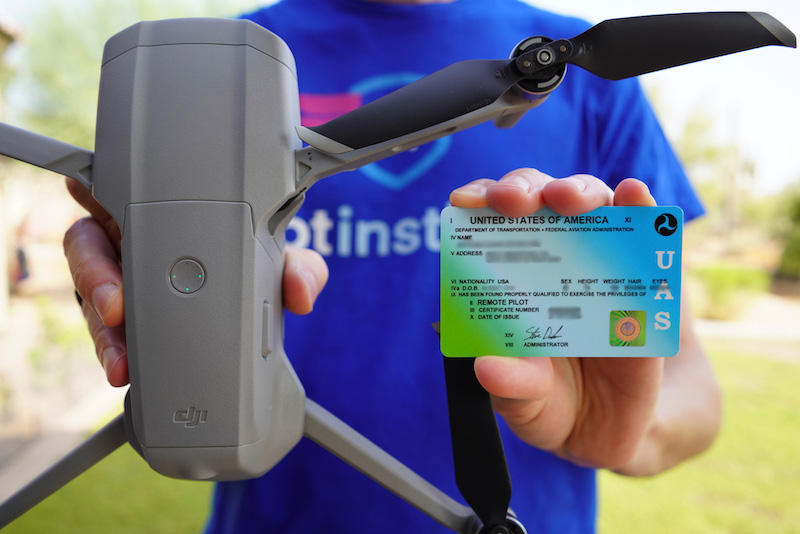
Part 107 license expiry and renewal
Technically, there is no expiration date for your Part 107 drone licenses. However, the privileges granted to you because you passed the knowledge test are valid only for 24 months. Beyond this period, you can no longer use said privileges even if your drone license is valid.
To keep your drone license current, you need to take ALC-677 on the FAA’s website. This free training needs to be taken every 24 months. It takes about an hour to complete.
Take note that you will not be issued a new drone license after passing the recurrent knowledge test. Instead, you will be given a new Airman Knowledge Test Report (AKTR) which certifies the currency of your license. Make sure to have the new AKTR and your drone license with you every time you operate a drone commercially.
On the matter of drone insurance
One question we get asked most often is this – does the Part 107 rules require commercial drone pilots to get drone insurance? The answer is no, there is nothing written under Part 107 that requires drone insurance. However, the FAA recommends that commercial drone pilots get one. More importantly, more and more drone pilots are recognizing the value of getting drone insurance, informally making it an industry standard.
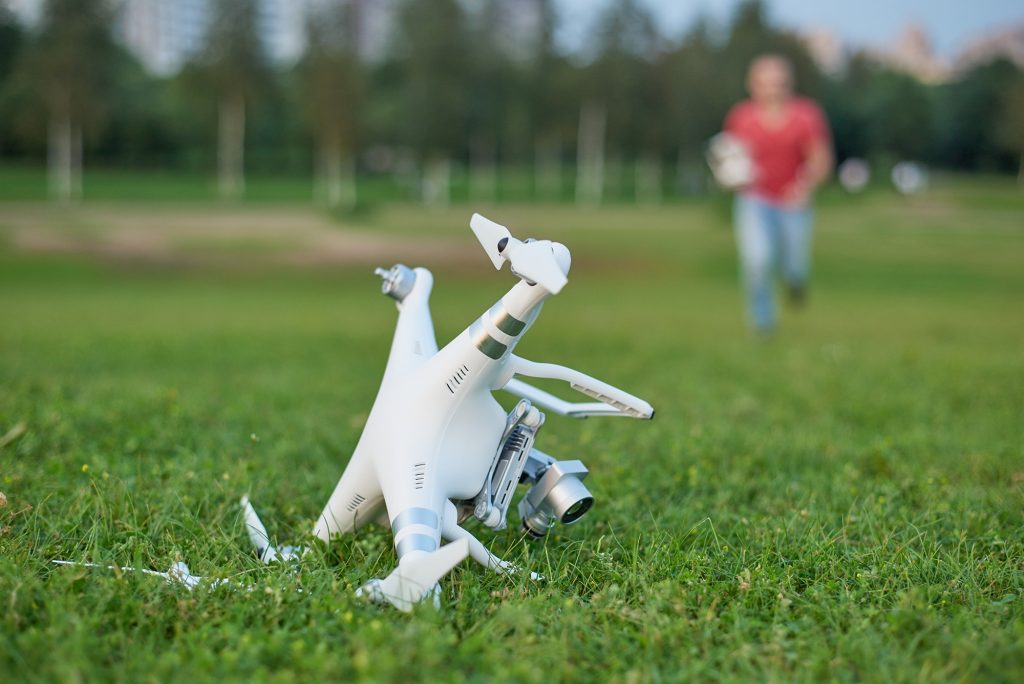
What is drone insurance good for? That depends on which type of drone insurance you get. The basic drone insurance is more officially called ‘drone hull insurance’. This is an insurance policy for the drone itself which will cover the costs of repairing or replacing it should it get damaged. You can also opt to include any high-value payload in your policy. As with standard property insurance, a more expensive drone will fetch higher insurance premiums.
The second and more important policy type that drone pilots recommend is liability insurance. For commercial drone pilots, this provides protection against the financial obligations that could come about because of a drone-related accident. This is potentially a far larger expense than having to repair your drone, especially if you frequently fly your drone near critical infrastructure or luxury homes. As such, it’s not uncommon for liability insurance policies to have coverages of $1 million or higher.
The commercial drone industry has become so mainstream in the last couple of years that it has also spurred traditional insurance policies to craft policies that cater to drone pilots. Nowadays, drone insurance policies are very common and easily accessible.
Drone pilots even have the option to get ‘episodic’ insurance policies – sort of an on-demand policy that only takes effect while drone operations are ongoing. Such policies have become incredibly popular because of how affordable they are and we expect to be more common looking forward.
Although drone insurance is not required by law, it is considered valuable for protecting your business and finances as a commercial drone pilot. In some cases, clients may also only work with drone pilots that have insurance coverage. In this regard, having a drone insurance policy can be considered a competitive advantage when working with naturally risk-averse clientele.
Final thoughts
There are a few things about the Part 107 rules that can make them hard to comprehend even for experienced drone pilots. The first is that there is a lot of material to go through, making it incredibly difficult to read the documentation cover to cover. There is also a lot of language in the documentation that is still ambiguous, leaving a lot to be interpreted by the drone community or by individual drone pilots.
One of the most challenging aspects of drone-related legislation is the fact that it’s still in a very dynamic state. The commercial drone industry is still young and immature which means that the practices are yet to be established. Couple this with the fact that drone technology seems to still be at the phase of rapid development, and you have the recipe for standard practices that need to be reviewed and revised frequently.
